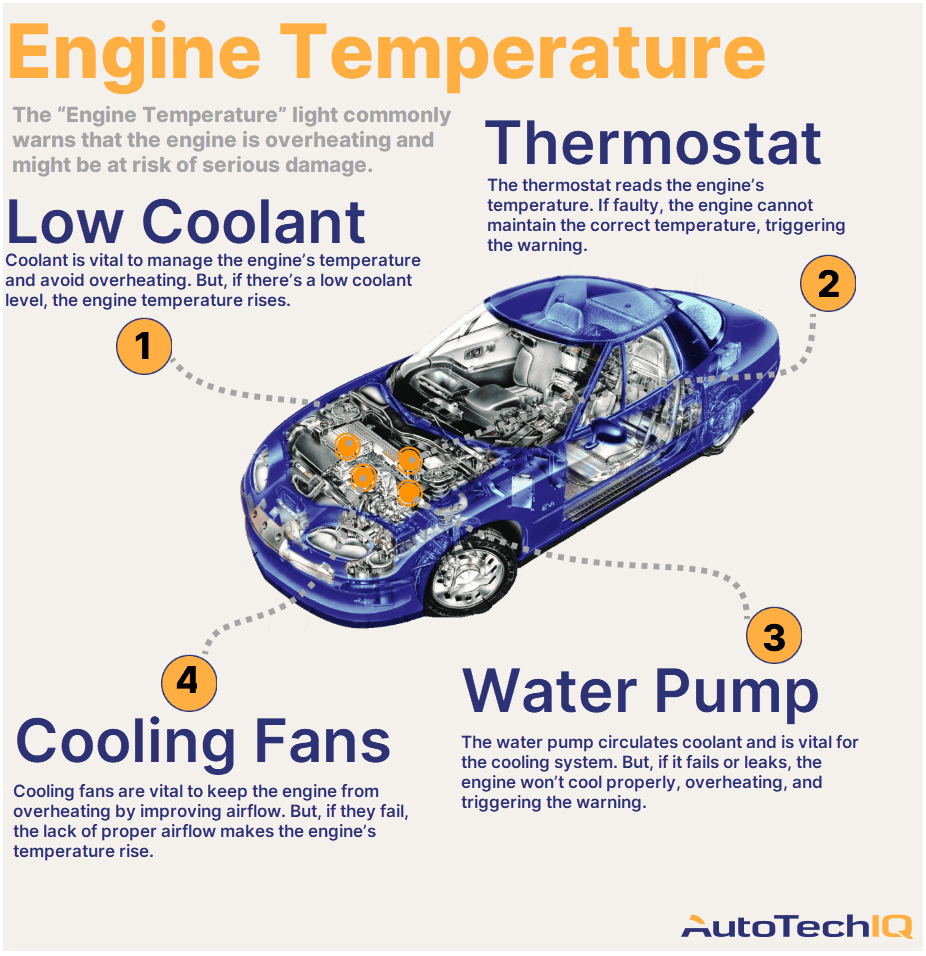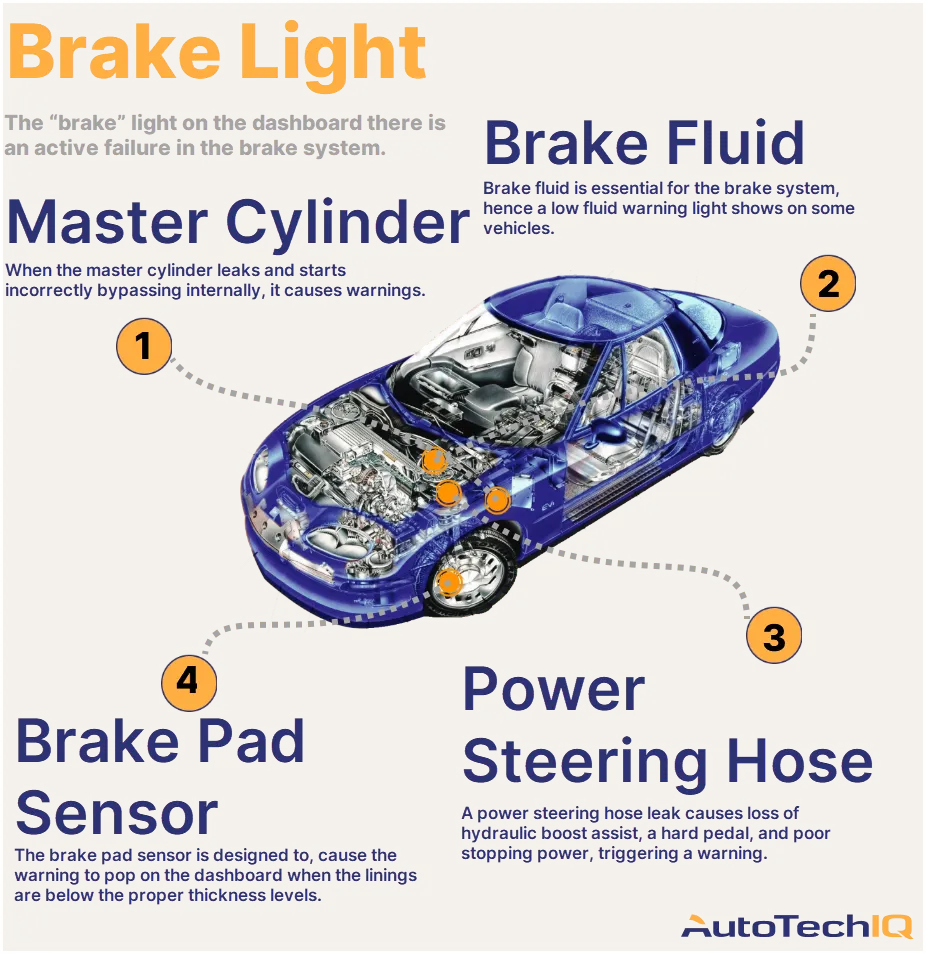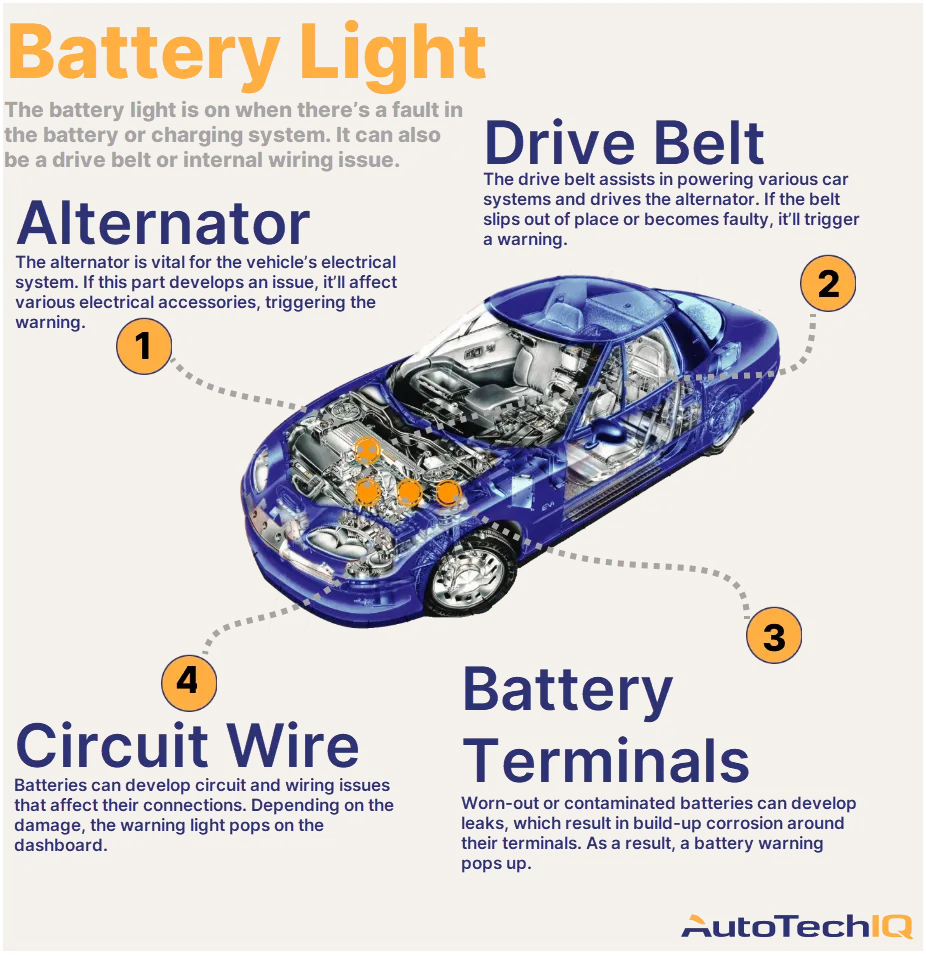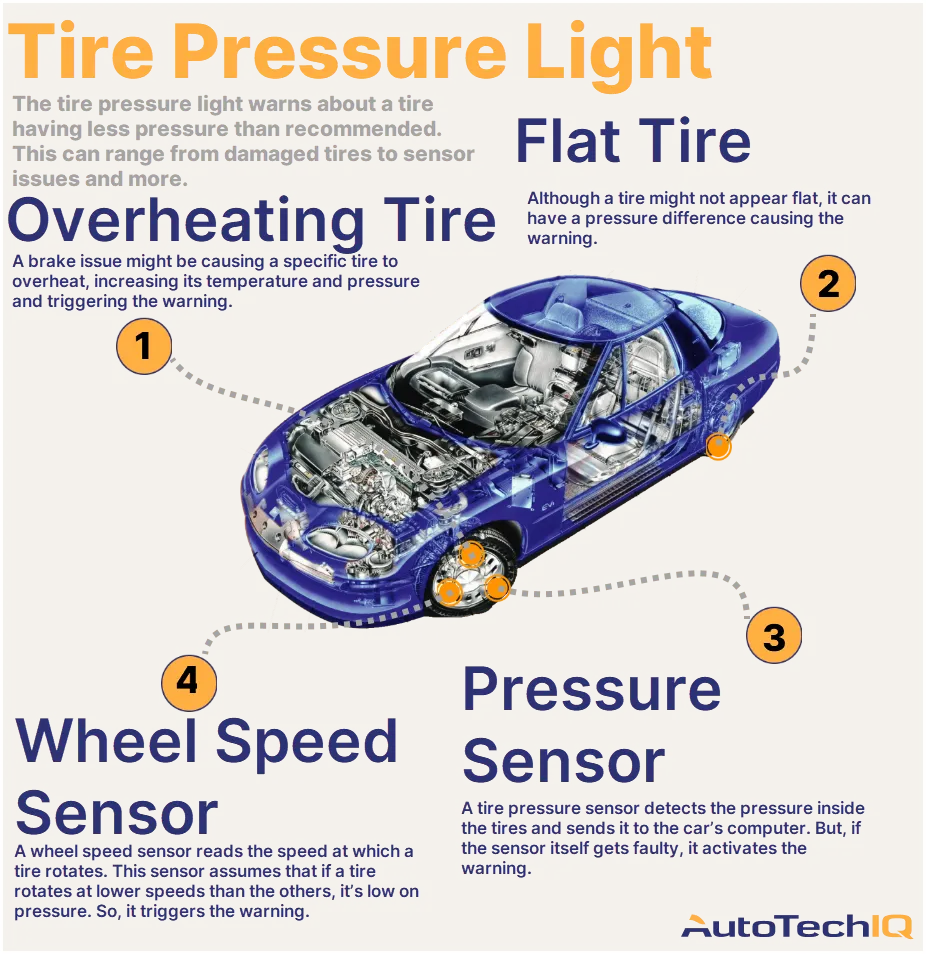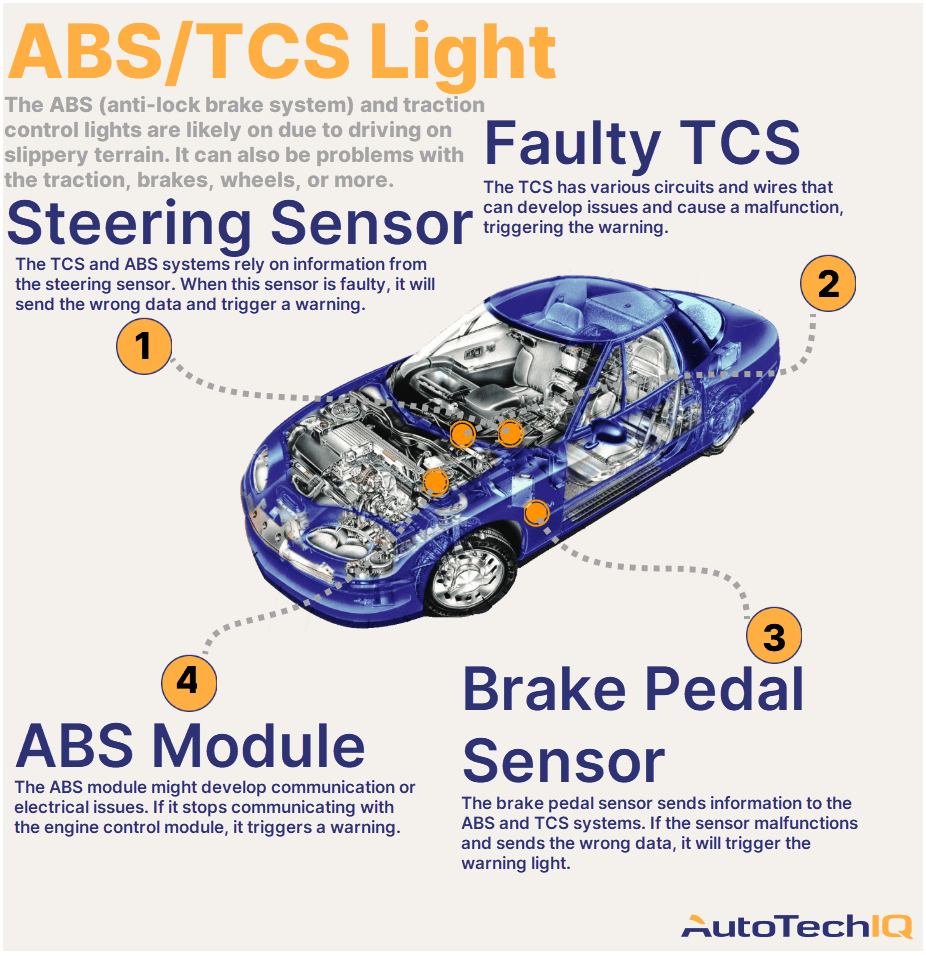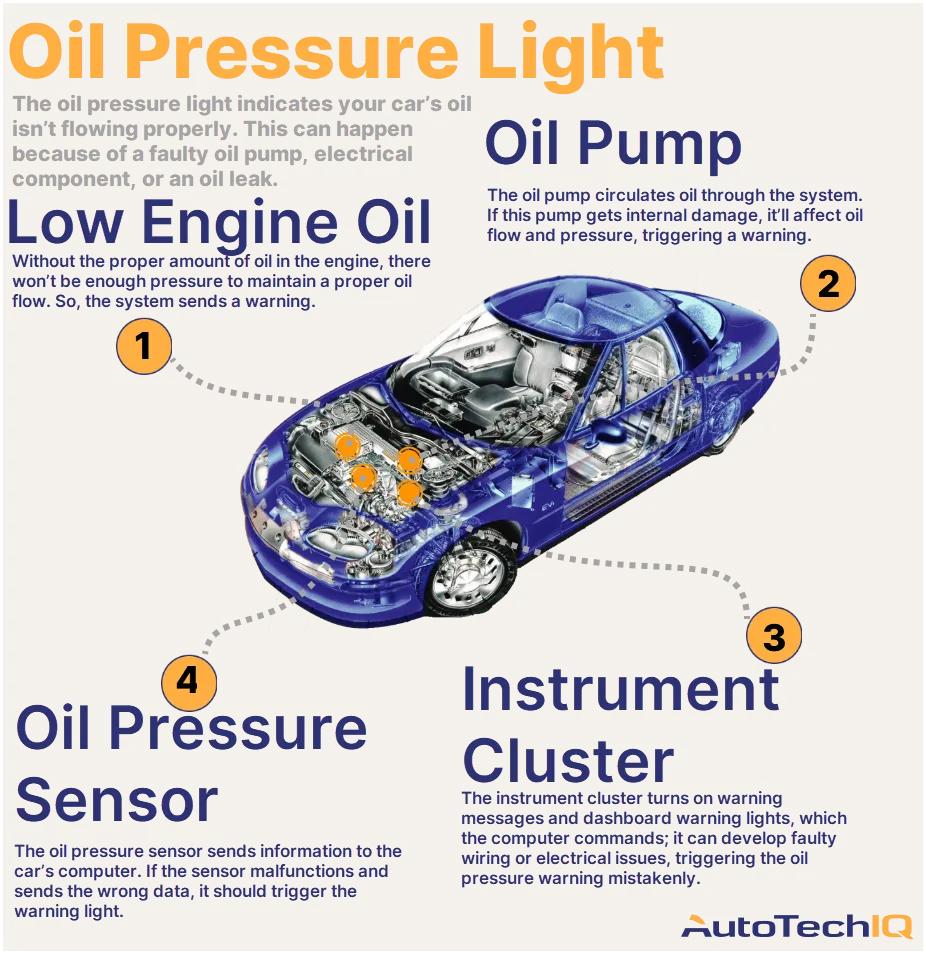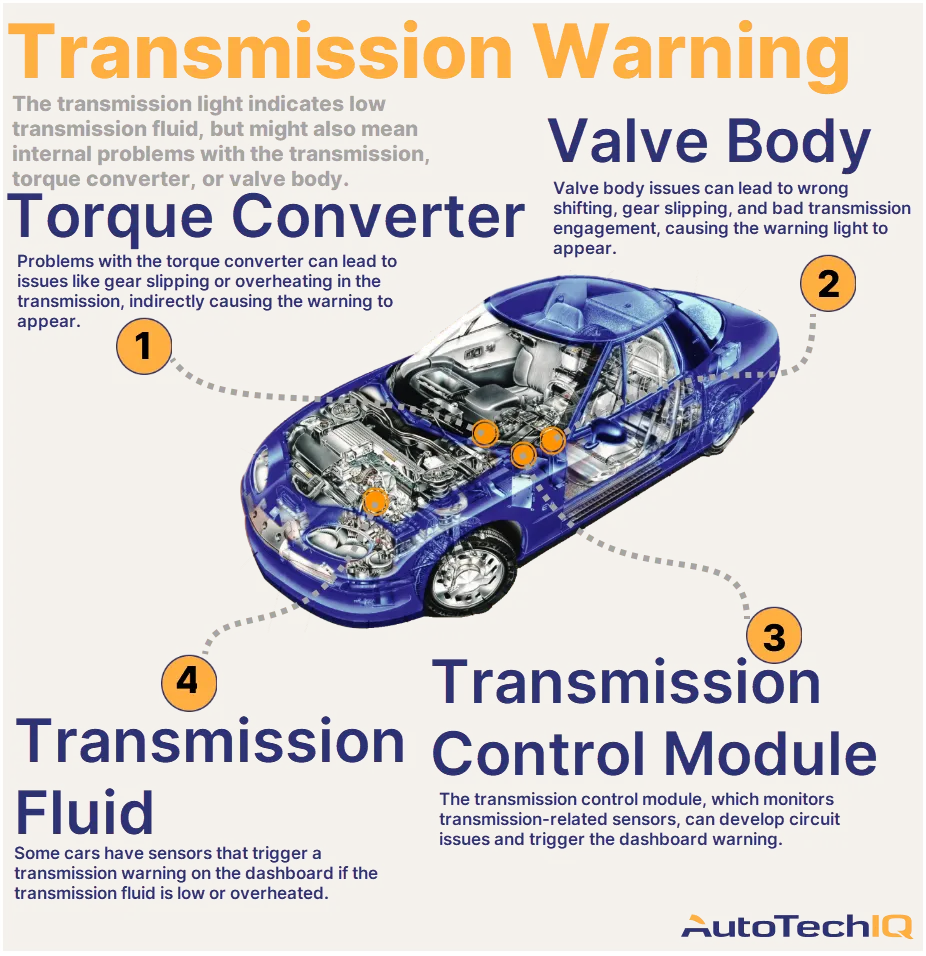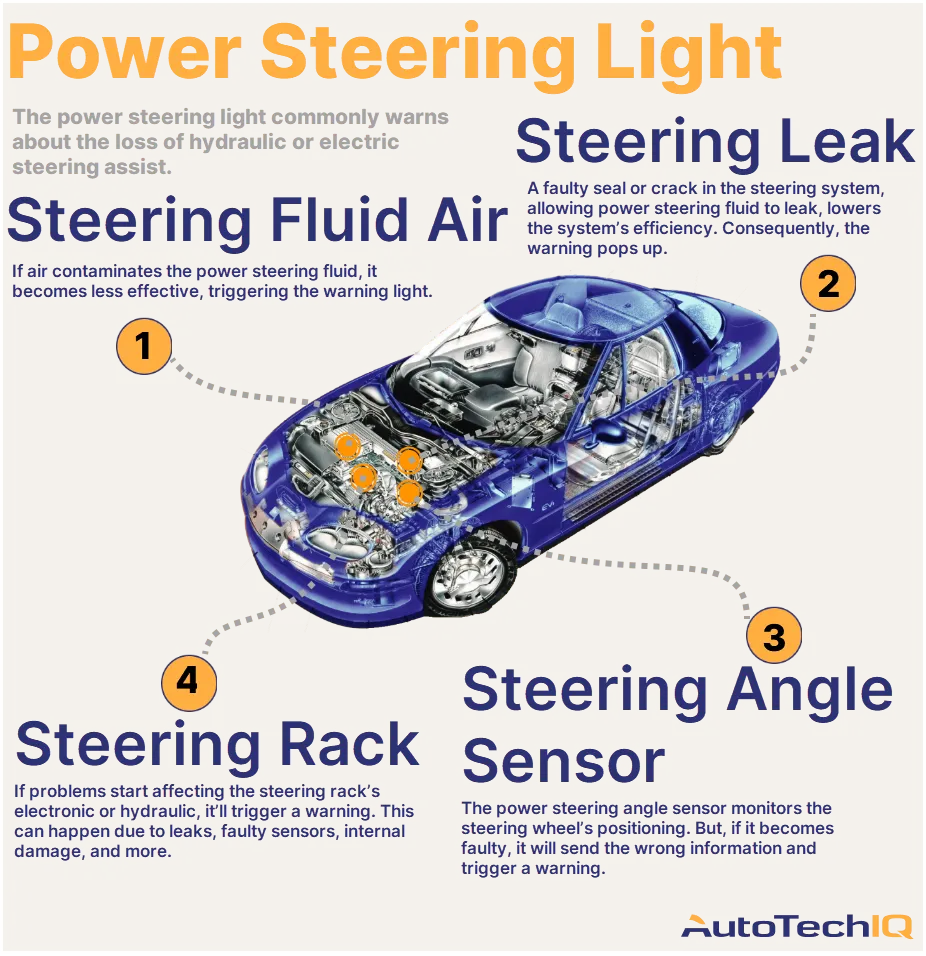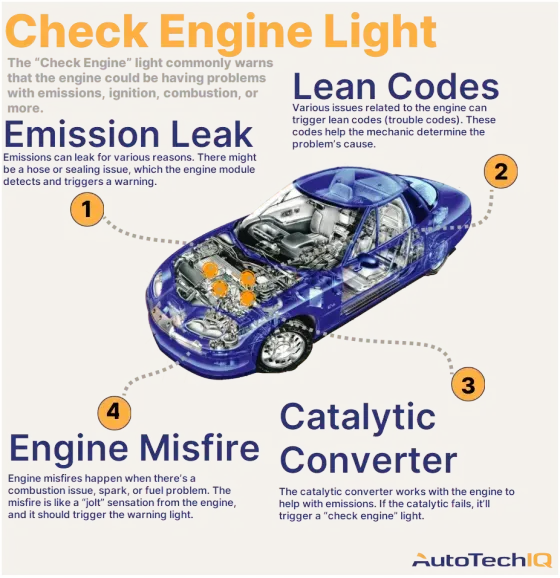
Is Your Car's Check Engine Light Constantly On?
The yellow check engine light means that the engine is releasing more emissions than expected, often due to a catalytic converter failure. This causes engine misfires, poor fuel mileage, low power, and more. But there are alternative common causes for this issue.
Watch out: Stay alert if the check engine lights up on your car's dashboard. Your vehicle might be under progressive damage and can end up requiring hefty repairs in the future; it'll also show considerable fuel loss. So please, keep track of your car's odd behaviors and browse through our articles to find out the information you'll need to share with your go-to auto shop.
A vehicle's check engine light is a serious alert. Here are some of the main risks car owners should be aware of:
-
Combustion problems: The engine might be failing to do combustion correctly. This means that toxic gases and flammable reactions are happening wrongly, which can lead to bad fuel economy, engine misfires, and even fire hazards.
-
Safety Issues: The check engine light can be due to different factors; if it’s combustion-related, then watch out for fire hazards; if it’s internal wear and tear, then your vehicle can leave you stranded unexpectedly or break down mid-traffic.
-
Health Concerns: A check engine light might mean combustion issues, relating to toxic gases escaping from the engine. These gases might sneak inside the cabin and cause intoxication or breathing allergies.

